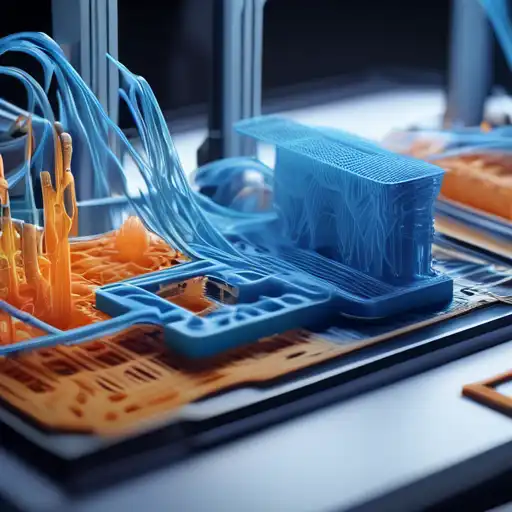Introduction to 3D Printing
3D printing, also known as additive manufacturing, is a process of creating three-dimensional objects from a digital file. This innovative technology builds objects layer by layer, offering unparalleled flexibility in design and production. From prototyping to full-scale manufacturing, 3D printing is revolutionizing industries across the globe.
The Process of 3D Printing
The journey of 3D printing begins with a digital model, typically created using computer-aided design (CAD) software. This model is then sliced into thin layers by specialized software, which the 3D printer reads to construct the object layer by layer. Materials used can range from plastics and metals to ceramics and even biological materials, depending on the application.
Applications of 3D Printing
3D printing has found applications in numerous fields, including but not limited to:
- Healthcare: Custom prosthetics, dental implants, and even bioprinting of tissues and organs.
- Aerospace: Lightweight components for aircraft and spacecraft, reducing weight and improving fuel efficiency.
- Automotive: Custom parts, prototypes, and even entire vehicles are being 3D printed.
- Fashion: Custom jewelry, footwear, and clothing are being created with intricate designs not possible with traditional methods.
Benefits of 3D Printing
The advantages of 3D printing are vast, including:
- Customization: Products can be tailored to individual needs without significant cost increases.
- Speed: Prototypes can be produced in hours, significantly reducing development time.
- Cost-Effectiveness: Reduces waste and the need for expensive molds or tooling.
- Complexity: Allows for the creation of complex geometries that are impossible with traditional manufacturing techniques.
Challenges and Future Directions
Despite its many benefits, 3D printing faces challenges such as material limitations, speed of production for large volumes, and intellectual property concerns. However, ongoing research and development are addressing these issues, paving the way for even broader adoption of this transformative technology.
As we look to the future, 3D printing is set to play a pivotal role in the next industrial revolution, enabling sustainable manufacturing practices and fostering innovation across all sectors of the economy. The potential is limitless, and we are just beginning to scratch the surface of what's possible with this remarkable technology.
For more insights into the latest trends in 3D printing, check out our technology section.
